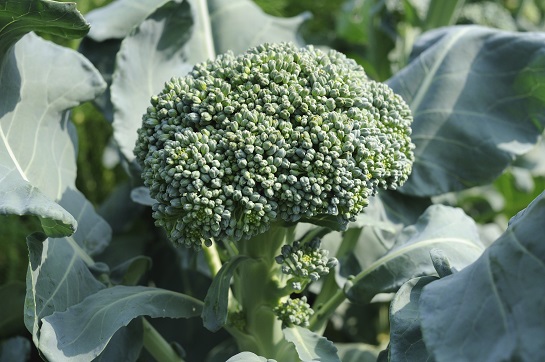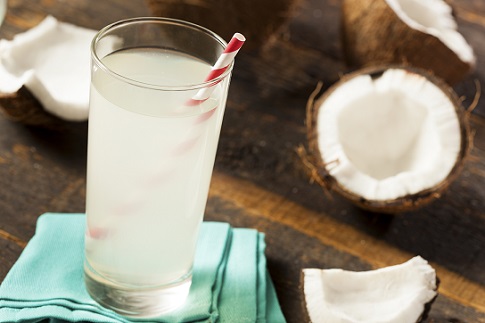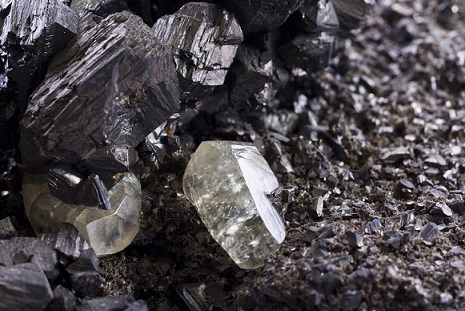Manganese is a trace mineral, which is constantly mistaken for magnesium but is actually completely different.
Manganese makes up roughly 0.14% of the Earth’s crust, making it the 12th most abundant element in total. Cave paintings in France dating back 30,000 years have been found to contain manganese ore, as the black colours in the art. Ancient artists mixed the manganese with various natural carriers, such as animal fats and blood, cave liquids high in calcium carbonate, bone marrow, and vegetables. The red colours of the animals were created by red clay.
By the 1st century AD, manganese ore was still used for black pigment, this time in Roman pottery according to ancient texts. In 1774, scientists isolated manganese for the very first time, and since then, they’ve painstakingly mapped out its bodily powers, including for brain health and cell mitochondria functioning.
It’s rare to see manganese discussed in health circles, let alone the secret circles of acne maniacs. Zinc or selenium get all the attention.
Nevertheless, manganese has several interesting connections to clear skin.
Manganese keeps your skin strong
The first power is a little known role in maintaining collagen, your skin’s main structural protein.
Collagen is the gatekeeper against wrinkles and thinner skin with age, and it also helps dying acne to heal faster. All collagen supplies in the body are made from three amino acids: glycine, proline and lysine.
Proline is particularly interesting, as vitamin C helps to transform it into a more complex form called hydroxyproline, which creates the coiling helix structure which makes all collagen so tough. Proline and hydroxyproline collectively make up 23% of collagen in the body, with glycine making up the largest individual portion at 33%…
…and where does manganese step in? It’s required to manufacture the enzyme prolidase. In food form, proline tends to be bound very tightly with other amino acids, and prolidase is the enzyme which cleaves these bonds. Prolidase is vital for making the proline in eggs, meat or nuts more accessible.
Read Annihilate Your Acne – get the greatest diet ever for clear and radiant skin
What’s more, this manganese-fuelled enzyme recycles the proline already in your skin. Old proline is broken down by enzymes called MMPs into fragments called imidopeptides. This is phase 1, and in phase 2, prolidase breaks down the imidopeptides into fresh new proline, ready to be incorporated into shiny new layer of collagen. Prolidase is the main enzyme for recycling proline – there’s a second one called prolinase, but it’s much less significant.
This study concluded that prolidase “is of great importance during wound healing, inflammation, aging” and more. Prolidase even affects collagen production at a transcriptional level by altering NF-kappaB, a protein complex which can suppress collagen output (study).
Manganese also helps to create glycosaminoglycans, another set of compounds involved with wound healing. Vitamin C is the most famous collagen nutrient, and justifiably so, but without manganese, the collagen ship will sink before it sets sail.
Manganese is needed to manufacture antioxidants
Secondly, we’re constantly ranting about the antioxidant glutathione on this website. It’s the main self-manufactured antioxidant in humans, and it doubles its powers by protecting antioxidants in food (such as vitamin E and C) from disintegration…
…but there’s also a second homemade antioxidant called superoxide dismutase (full article here). Deficiencies in SOD are less widespread, and fixing your levels isn’t an emergency, but one study on 52 acne patients found significantly lower SOD levels (along with glutathione).
SOD has a specific power: deactivating free radicals called superoxide anions, which are natural in moderation but often swell to extreme levels. The investigation continues, but according to this study, superoxides are one of the very agents the immune systems deploys against acne bacteria (AKA propionibacterium acnes).
Manganese has one simple part to play in this saga – being a main ingredient for SOD alongside copper and zinc.
Like with glutathione, there’s multiple food sources of SOD, particularly plant foods like spinach, pineapple and bears. Life extension gurus often recommend these secret foods, but external SOD is fragile, and doesn’t survive the journey through the digestive system.
Instead, the way forward is supplying the raw materials. Glutathione has magnesium, zinc and selenium, and with SOD the kingpin is manganese. There’s actually a specific SOD form called manganese-superoxide dismutase (Mn-SOD), or SOD2, and this study found that deficiencies were a huge factor in premature skin ageing.
Apparently, higher than average levels of MN-SOD won’t extend your lifespan, but a lifelong deficiency can reduce it. Mice with low levels experienced a strong decline in 1) connective tissues and 2) facial subcutaneous fat tissue, which is a vital cosmetic aspect of ageing.
Next: the 6 vitamins and minerals which can massively reduce acne
What’s interesting is that collagen fell too. The existing collagen fibres were weaker, and their organisation was impaired, giving the mice the characteristics of much older skin. This could be caused the prolidase pathway above, but another avenue is the reduced SOD offering less protection to collagen fibers against free radicals. Either, the collagen powers are solidifying.
Without manganese, your antioxidant defences will never be performing at tip-top capacity.
The other powers of manganese for acne
The two powers above are easily the main ones, but manganese is also connected to blood sugar levels. It’s a cofactor of enzymes involved with gluconeogenesis, the process of converting non-carbohydrate substances like amino acids to sugars.
For acne, high blood sugar is a horror story of excess dead skin cells and oily skin – the more efficient your glucose systems, the better. A few animal studies have found correlations between low manganese levels and spiralling blood sugar.
Manganese also produces the arginase enzyme which helps to detoxify ammonia, an inflammatory compound produced during protein metabolisation.
Then there’s a common claim that manganese is vital for vitamin E absorption. There’s no evidence supporting this claim directly, no signs of it cleaving bonds in foods like proline, or making transporters in the gut more active.
That said, increasing SOD will protect vitamin E and vitamin C molecules from damage – this is likely what led to the original myth. For acne, vitamin E helps to minimise the dangers of oily skin, while vitamin A is fantastic for reducing the oil itself.
Important article – the top 7 natural topical treatments for acne
Finally, we have a true test. There are no studies on acne itself, our old nemesis, but this 1987 study made 7 male volunteers follow a low manganese diet for 39 days.
5 of them developed rashes which were suspiciously close to dermatitis, a red itchy skin disease with 50% similar origins to acne. They followed this with a 10 day replenishment period, which caused all the patients to heal. Superoxide dismutase could have fallen, or maybe their collagen frayed and weakened, but the results are telling.
Why manganese won’t clear your acne
You might be surprised to hear then, that I don’t recommend wasting a neuron of thought on manganese. Why? Because unlike minerals such as magnesium and zinc, deficiency is very uncommon.
Manganese is found in high levels in many fruits and vegetables. Just 100 grams of pineapple contains 46% of the RDA; 50 grams of almonds contains 57%.
With magnesium, it’s a big challenge to get enough for acne, but manganese suffers from neither the soil depletion nor the pesticide-induced depletion that magnesium does.
Rates of manganese deficiency aren’t available, but that’s only because they’re so insignificant. Perhaps the only real risk factor is the common herbicide glyphosate. This weed-killer is sprayed on genetically modified soybeans, corn, tobacco and sugar beets, and chelates manganese strongly. When present on food, it binds to minerals and prevents you from using them. Plants sprayed with glyphosate become incapable of taking up manganese from soil.
So there’s a very small chance that if you puff on a pack of cigarettes daily, or love corn on the cob with every meal, then your manganese supplies are dwindling fast. However, it’s very unlikely. If you’ve already adopted the acne-friendly diet on this website, then I’d deem your chances of deficiency to be almost zero, as long as your diet is fairly varied.
Vitamin D – the greatest nutrient for a bright and glowing skin tone
Instead, toxicity is the real threat today. Manganese is a standard mineral of groundwater and rocks, and in most locations the tap water contains moderate amounts (another reason why deficiency is uncommon). In some geological areas though, way too much seeps in. One study found that children’s IQs were 6 points lower in the upper 20% of tap water manganese intake.
Normal manganese levels aren’t a threat, compared with fluoride (another tap water resident), but high levels are. There’s also an unconfirmed theory that too much manganese can inhibit serotonin production. Thus, some conspiracy theorists believe that the presence of manganese in tap water is a government plot to turn us all into raging psychopaths (what would be the benefit in that?).
Regardless, this is another reason to buy a water filter, and dodge all the pesticides, arsenic, and birth control residues in one fell swoop
Never give your baby soy infant formula, as soybeans are natural reservoirs of manganese. When concentrated into a dense formula, levels of the mineral can grow to 200 times that of milk-based formula. Young kids also absorb significantly more manganese than older people, and excrete significantly less. Soy is an overrated food for acne and health anyway.
Conclusion
There’s not much you can do with manganese. Your levels are probably fine already.
Instead, use this article to expand your acne knowledge in a satisfying way, and gain important knowledge on the intricate antioxidant network.
When it comes to acne minerals, your top priorities should be magnesium, selenium and zinc. All three help to manufacture glutathione, and zinc also lowers inflammation and enhances the ability of vitamin A to reduce oily skin.
Magnesium is needed to manufacture the neurotransmitters melatonin and serotonin, the sleep hormone and happiness hormone respectively. Selenium has less bonus benefits, but reduces inflammation nicely as well. Another mineral which isn’t useful for acne is calcium (except very loosely).
Overall, manganese is an important mineral for acne, but not one you need to focus on.
NEXT: the ultimate diet for clearing acne permanently
Thanks for reading!




“I think” that people with multiple sclerosis have a higher need for manganese than other people. Not enough can cause dizziness and hearing defects. And some diabetics are also deficient in manganese. It stabilizes the brain too. Perhaps the drinking water was different for them as children. Especially since my Aunt had dimensia, but also cooked with aluminum pans for many, many years. Health knowledge, at the very least can make one feel a whole lot better. Just learn when to add or lighten various nutiments. I also think that eatting fish each week is very important, as it contains omegas and trace minerals that are not in a lot of other proteins. Variety helps cover unknown nutriants. Wendy’s has an awesome Cod fish burgar now. Try something new once in a while. I never liked pineapple, but hey, I eat it now! I thank God I don’t have health problems. But keeping the prayers going up.